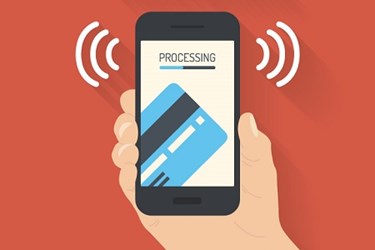The Illusion Of Mobile Payments' Slow Start
By Jeremiah Shea, contributing writer

Don’t be fooled into thinking that mobile payments are simply the latest fad. There’s a quiet revolution underway in how consumers make payments and how different that will be in the very near future.
While tech giants like Apple and Samsung, and the like consistently make big splashes and introduce radical change, their foray into the payments space might seem like a stumble as consumers have only begun to adopt these newer methods. But if you couple that with the almost parallel introduction of EMV in the U.S., you have the perfect storm for the birth and rapid adoption of a new store experience.
Mobile payments, and all of its various monikers, is essentially paying with a mobile device — whether that’s a smartphone, smartwatch, or other wearables. The “other wearables” category is one that is currently being explored by companies like MasterCard with its Commerce for Every Device program, partnering and funding development and exploration of payment technology in new ways.
Sherri Haymond, senior vice president of digital payments at MasterCard says, “The great thing about the MasterCard program is that we are adding payment functionality to items that consumers are already using — fitness bands, jewelry, clothing, watches.”
While current acceptance rate and usage statistics are relatively low among consumers, the soon-to-be explosion of the Internet of Things paired with companies like Walmart introducing its own payment solution will quickly change the mindset of the consumer into one that expects a quick and efficient check out as table stakes for any business.
In the announcement of Walmart Pay, Neil Ashe, president and CEO of Walmart’s global e-commerce division said, “We are creating a seamless shopping experience that includes payment. It’s fast. It’s simple, and it’s a secure way for customers to use their smartphones.”
Mobile payment is one of those blindsiding revolutions that will snowball quickly. By 2018, Gartner is predicting that half of consumers will be leveraging mobile payments to check out. That has much to do with the perfect storm mentioned above, but also millennials and younger generations growing up and exercising their buying power. With buying power comes preference, and understanding the growing trend of shopping online, enhancing the in-store experience will become paramount. Simple hang-ups like waiting in a line, while not unavoidable, could at least be minimized with the adoption of mobile payments.
Even today when we you visualize a mobile payment, you likely think of tapping a phone on a terminal to exchange a payment. Apple, as it often does, introduced a self-checkout option called EasyPay for in-store purchases via its app back in 2011 — long before Apple Pay ever came to fruition. The notion of mobile payment could evolve even further when you think outside the box and begin to take away the normal constraints of paying at the counter with a card.
The net of it is that within three years, things will look radically different in both where and how consumers pay. Are you, or more importantly your merchant IT customers, ready for this change and immediate need?
